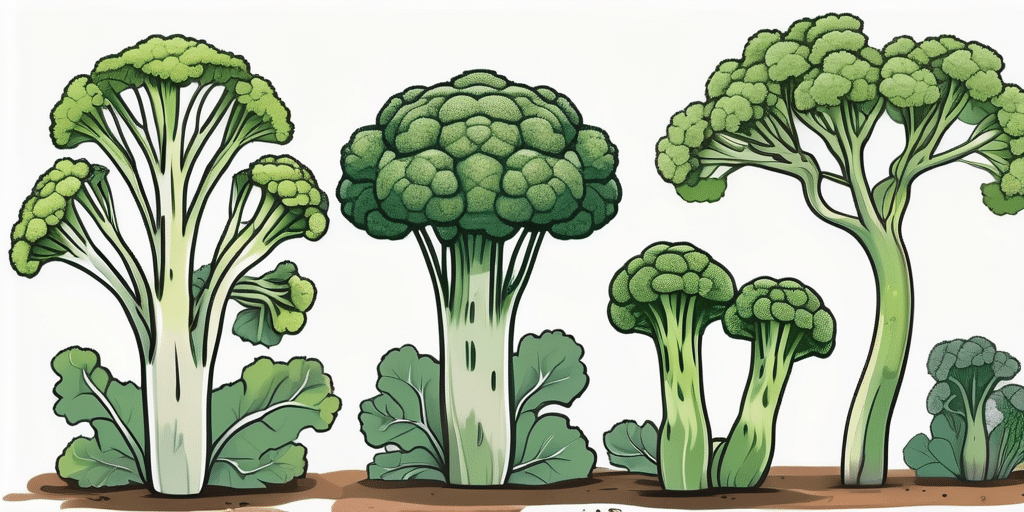Broccolini, a hybrid of broccoli and Chinese kale, is a delightful addition to any home garden. With its tender stalks and flavorful florets, it’s a versatile vegetable that’s as nutritious as it is delicious. But how do you grow broccolini? Let’s delve into the process.
Understanding Broccolini
Before we get into the nitty-gritty of growing broccolini, it’s important to understand what this vegetable is and why it’s worth growing. Broccolini, also known as baby broccoli, is a green vegetable similar to broccoli but with smaller florets and longer, thin stalks. It’s a hybrid of broccoli and Chinese kale, which gives it a unique, slightly sweet flavor.
According to the USDA, broccolini is rich in vitamins A, C, and K, and also provides a good amount of fiber. It’s a nutritious addition to any meal and can be cooked in a variety of ways, from steaming to roasting to stir-frying.
Choosing the Right Conditions
Like most vegetables, broccolini thrives in certain conditions. Understanding these will help ensure a successful harvest.
Climate
Broccolini prefers a cooler climate and does well in temperatures between 45°F and 75°F. It’s a cool-season crop and can tolerate frost, making it an excellent choice for early spring or late fall planting.
According to the Michigan State University Extension, broccolini can bolt, or go to seed, in temperatures above 80°F. If you live in a warmer climate, consider planting broccolini in the fall for a winter harvest.
Soil
Broccolini prefers well-draining soil with a pH between 6.0 and 7.0. The soil should be rich in organic matter, as broccolini is a heavy feeder. Adding compost or well-rotted manure can help improve soil fertility.
The Purdue University Extension recommends testing your soil before planting to ensure it has the right pH and nutrient levels. Soil testing kits are available at most garden centers.
Planting Broccolini
Once you’ve chosen the right conditions, it’s time to plant your broccolini. Here’s a step-by-step guide:
- Prepare the soil by removing any weeds or rocks and working in compost or well-rotted manure.
- Sow broccolini seeds directly into the soil, about 1/2 inch deep and 3 inches apart.
- Water the seeds well and keep the soil moist until the seeds germinate, usually within 7 to 10 days.
- Once the seedlings are about 2 inches tall, thin them to about 12 inches apart to give them room to grow.
According to the University of Arkansas Extension, broccolini can also be started indoors 4 to 6 weeks before the last expected frost date. Transplant the seedlings outdoors once the danger of frost has passed.
Caring for Broccolini
With the right care, your broccolini plants will produce a bountiful harvest. Here are some tips for caring for your broccolini:
- Watering: Broccolini needs regular watering to grow well. Keep the soil consistently moist, but not waterlogged. A drip irrigation system can help provide consistent moisture.
- Fertilizing: Feed your broccolini plants with a balanced vegetable fertilizer every 4 to 6 weeks to support their growth.
- Weeding: Keep the area around your broccolini plants free of weeds, which can compete with your plants for nutrients and water.
- Pest control: Watch out for common pests like cabbage worms and aphids. Hand-picking, beneficial insects, or organic pesticides can help control these pests.
Harvesting Broccolini
Harvesting broccolini at the right time is crucial for the best flavor. According to the University of Minnesota Extension, broccolini is ready to harvest when the central head is fully developed but before the yellow flowers open. Cut the central head and the attached stem about 5 to 6 inches below the head.
One of the benefits of growing broccolini is that it will continue to produce side shoots after the central head is harvested, extending the harvest period. Keep harvesting the shoots as they develop to encourage more growth.
Enjoying Your Homegrown Broccolini
Once you’ve harvested your broccolini, it’s time to enjoy it! Broccolini can be used in a variety of dishes, from stir-fries to salads to side dishes. Its sweet, mild flavor pairs well with a variety of ingredients, making it a versatile addition to your kitchen.
So there you have it – everything you need to know about growing broccolini. With a bit of preparation and care, you can enjoy this nutritious and delicious vegetable right from your own garden. Happy gardening!
Join Our Green-Thumbed Community!
Ready to turn your gardening dreams into reality? Subscribe for free to How to Grow Everything and get personalized gardening advice tailored to your specific location, grow zone, and experience level. Whether you’re a seasoned gardener or just starting, our family is dedicated to helping you build the garden of your dreams. Enjoy the best gardening tips, special offers, and deals delivered straight to your inbox—100% free, with no spam, just from our family to yours. Grow your knowledge alongside your broccolini!
